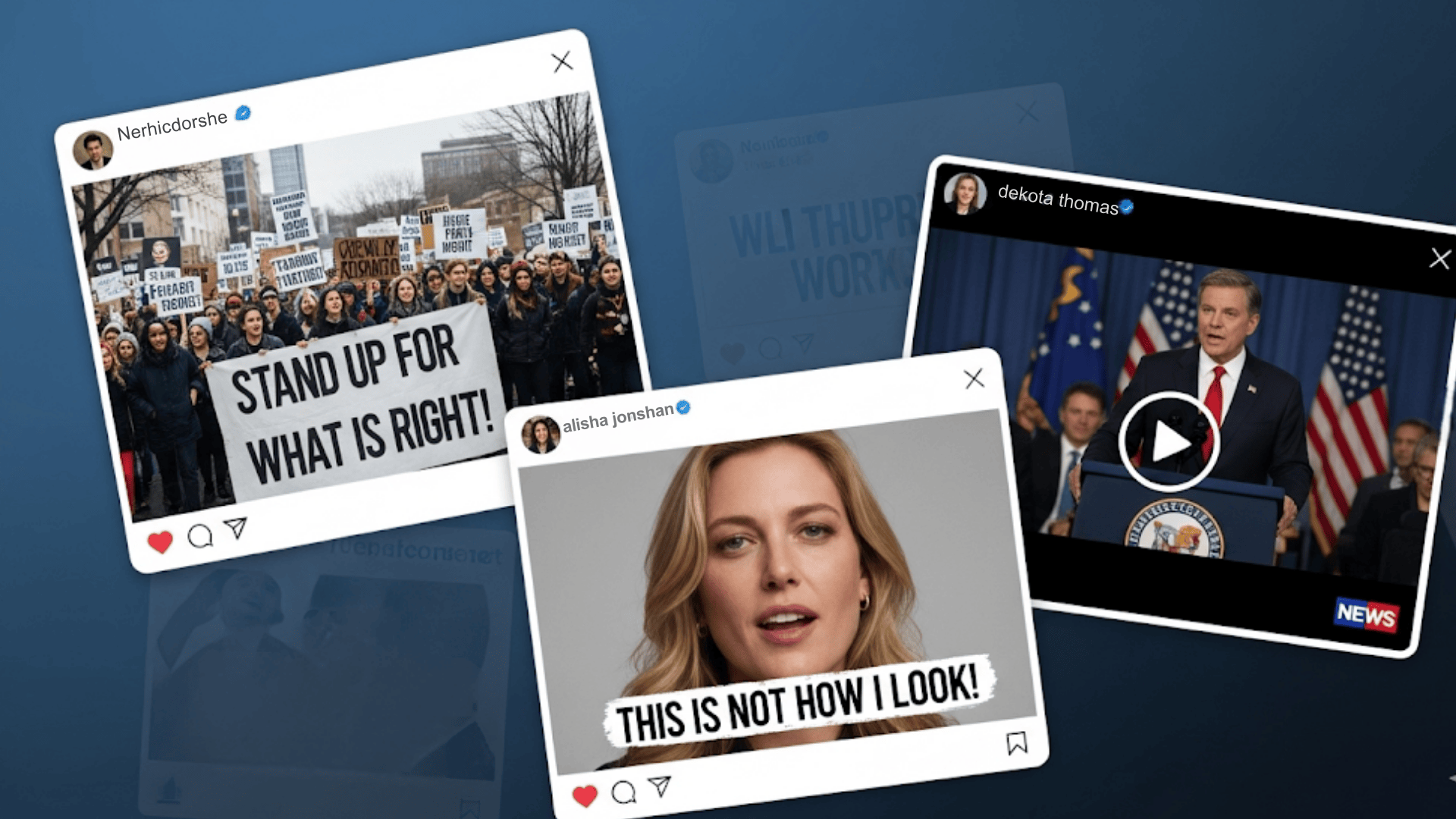Have you ever noticed how your social media feed seems to show you content that makes you angry or upset? You’re not alone in this experience.
Millions of users worldwide find themselves caught in endless debates and heated discussions online. The question many people ask is simple: are social media algorithms actually making things worse?
Social media platforms use complex systems to decide what content appears in your feed.
These systems, called algorithms, are designed to keep you scrolling and engaged. However, there’s growing concern that they may be pushing controversial content to capture your attention.
In this blog, I’ll show you how these algorithms work, why they might favor divisive content, and what this means for our online conversations.
How Social Media Algorithms Work?
Social media algorithms are like invisible assistants that sort through millions of posts every day. They decide what content you see based on several factors:
Key Algorithm Factors:
- Your past interactions (likes, comments, shares)
- Time spent viewing certain types of content
- Content from accounts you engage with most
- Trending topics and popular posts
- Your location and demographic information
These systems learn from your behavior. If you spend time reading political posts or controversial topics, the algorithm notices.
It then displays more similar content because it believes this is what you want to see. The goal is straightforward: to keep you on the platform for a longer period. More time spent equals more ads viewed, resulting in increased revenue for the platform.
Why Controversial Content Gets More Attention?
Here’s where things get tricky. Algorithms are designed to maximize engagement. But what type of content gets people to react most?
6 Reasons Controversial Content Dominates:
- Triggers Strong Emotions – People react faster to content that makes them angry or upset than to neutral posts.
- Creates an Immediate Response Urge – Controversial posts prompt users to feel compelled to comment or share their opinion right away.
- Generates More Comments – Debates and arguments in comment sections significantly boost the post’s engagement metrics.
- Gets Shared More Often – People share controversial content to disagree with it or show others what’s wrong.
- Holds Attention Longer – Users spend more time reading and re-reading posts that challenge their beliefs.
- Sparks Multiple Visits – People return to controversial posts repeatedly to check new comments and responses.
How Controversy Spreads So Quickly?

Understanding why controversial content dominates isn’t enough; we also need to know how it spreads so quickly across social media platforms.
1. People Share to Disagree
When people see controversial content, they often share it specifically to argue against it or show their followers what’s wrong with it.
This disagreement sharing actually helps the content reach more people because the algorithm counts all shares as positive engagement signals.
Even negative attention helps posts go viral, creating an ironic situation where criticism spreads.
2. Emotional Reactions Happen Instantly
People respond to controversial content much more quickly than they do to neutral posts. These fast emotional reactions create immediate engagement that algorithms interpret as high-quality content.
Meanwhile, thoughtful, measured responses take longer to develop and often result in less visible engagement. The algorithm rewards speed over substance.
3. Arguments Create Extended Activity
Comment sections on controversial posts turn into heated debates that can last for hours or even days.
As more people join these discussions, the post remains “active” and continues to generate fresh engagement signals.
The algorithm sees this sustained activity as proof that the content is valuable and worth showing to even more users.
4. Network Effect Amplifies Reach
Once controversial content gains initial traction, it creates a snowball effect across social networks. Each person who engages with it exposes the content to their entire friend or follower list.
The algorithm continues pushing it to more feeds because engagement keeps growing exponentially. This can turn a single controversial post into a viral phenomenon within hours.
5. Memory and Return Visits
Controversial content tends to linger in people’s minds longer than neutral posts because strong emotions facilitate the formation of memories.
Users often return multiple times to check for new comments or responses, creating repeated engagement signals.
These return visits tell the algorithm that the content is particularly compelling and worthy of broader distribution.
Why Is Your Social Media Feed So Toxic?
Algorithms can trap users in “echo chambers” where they only see content that reinforces their existing beliefs and opinions.
How These Chambers Form
Echo chambers develop gradually through the process of personalization. When you consistently engage with content that matches your viewpoints, the algorithm learns to show you more similar content.
Over time, posts that challenge your beliefs are filtered out without your conscious choice.
| Stage | What Happens | Result |
|---|---|---|
| Initial Engagement | You like/comment on posts matching your views | Algorithm notices your preferences |
| Content Filtering | The platform shows more similar content | Opposing views appear less often |
| Network Formation | You follow like-minded accounts | Feed becomes increasingly one-sided |
| Belief Reinforcement | Only see agreeing perspectives | Existing beliefs get stronger |
| Complete Isolation | Rarely encounter different viewpoints | Unable to understand other opinions |
5 Steps to Take Control of Your Feed

You don’t have to be a victim of algorithmic manipulation. Here are 5 practical steps to improve your social media experience today.
Step 1: Clean Up Your Following List
Start by unfollowing accounts that consistently post inflammatory or negative content. Look through your recent feed and identify sources of controversial posts.
Unfollow news accounts that focus on outrage, political pages that promote division, and influencers who thrive on drama. This single action can dramatically reduce controversial content in your feed.
Step 2: Use Platform Control Features
Every major social media platform offers tools to customize your experience. On Facebook, switch to “Most Recent” instead of “Top Stories” to see posts chronologically.
On Instagram, use “Not Interested” on posts you don’t want to see more of. On Twitter, mute keywords related to topics that upset you. These features train the algorithm to show you different content.
Step 3: Engage Mindfully
Change how you interact with content. Stop commenting on controversial posts, even to disagree; this tells the algorithm you want more similar content.
Instead, actively like, comment on, and share positive content that aligns with your interests. Engage with educational posts, hobby content, and uplifting stories to retrain your algorithm.
Step 4: Diversify Your Content Sources
Follow accounts that post educational, entertaining, or inspiring content related to your hobbies and interests. Add science pages, art accounts, cooking channels, or sports updates.
Join groups that focus on learning and engaging in positive discussions, rather than debating and engaging in conflict. This gives the algorithm better options to show you.
Step 5: Set Time Boundaries
Limit your social media usage to specific times of day. Turn off notifications for social media apps so you’re not constantly pulled back in.
Use your phone’s screen time controls to set daily limits. Take regular breaks from social media entirely; even a few days off can help reset your relationship with these platforms.
Real-World Impact on Society of Social Media

Algorithm-driven controversy doesn’t just stay online; it spills into our real lives in damaging ways.
Families argue over dinner tables about topics they saw on social media, friendships end over political disagreements amplified by echo chambers, and entire communities become polarized along ideological lines.
People experience increased anxiety, sleep problems, and addiction-like behaviors from constant exposure to inflammatory content, while misinformation spreads faster than facts because controversial claims generate more engagement than boring truths.
Final Thoughts
Are social media algorithms fueling controversy? Absolutely. These systems prioritize engagement over everything else, and controversy keeps people clicking, commenting, and sharing.
The evidence is clear: divisive content spreads more quickly and reaches a wider audience than positive posts.
But here’s the good news: You’re not powerless. Understanding how algorithms work gives you the tools to take control.
You can curate your feed, choose what content to engage with, and break free from the cycle of controversy.
The future of social media depends on both platform changes and our choices as users. We can demand better algorithms while also being more mindful consumers.
What strategies have you tried to manage controversial content in your feeds? Share your tips below and help others create a healthier social media experience!






































